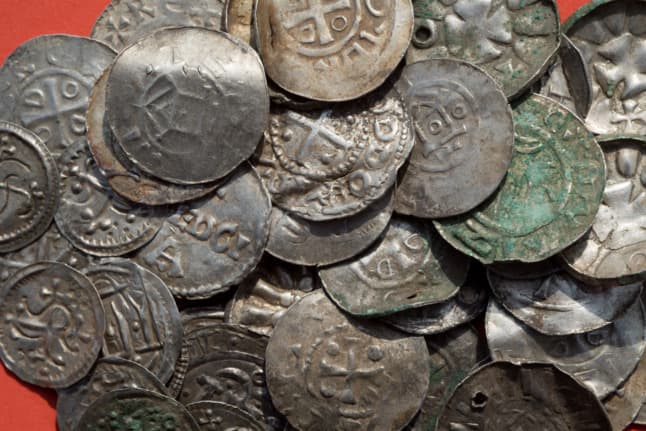Danish treasure discovery could yield new knowledge of pre-Viking people

An amateur archeologist has found 22 gold objects with sixth century symbols that could yield new details about
pre-Viking peoples in Denmark, the museum that will house the treasure said on Monday.
Some of the objects have runic motifs and inscriptions which may refer to the rulers of the time, but also recall Norse mythology, Mads Ravn, director of research at the Vejle museums in western Denmark, told AFP.
"It is the symbols on the items that makes them unique, more than the quantity found," according to Ravn, who said the treasure weighed about one kilogram.
One piece even refers to the Roman emperor Constantine from the early 4th century, said Ravn.
"The find consists of a lot of gold items, including a medallion the size of a saucer," Ravn added.
According to initial examinations, the treasure could have been buried as an offering to the gods at a chaotic time when the climate in northern Europe dramatically turned colder after a volcanic eruption in Iceland in 536 sent ash clouds into the sky.
"They have many symbols, some of which have not been seen before, which will enable us to enlarge our knowledge of the people of this period," he said.
The treasure was found near Jelling in southwestern Denmark, which historians say became a cradle for kings of the Viking-age which lasted between the 8th and 12th centuries.
The treasure will be on display at the museum in Vejle from February 2022
The amateur archeologist using a metal detector found the treasure about six months ago but the news was only disclosed now.
READ ALSO: DNA analysis reunites Viking relatives in Denmark after 1,000 years
Comments
See Also
Some of the objects have runic motifs and inscriptions which may refer to the rulers of the time, but also recall Norse mythology, Mads Ravn, director of research at the Vejle museums in western Denmark, told AFP.
"It is the symbols on the items that makes them unique, more than the quantity found," according to Ravn, who said the treasure weighed about one kilogram.
One piece even refers to the Roman emperor Constantine from the early 4th century, said Ravn.
"The find consists of a lot of gold items, including a medallion the size of a saucer," Ravn added.
According to initial examinations, the treasure could have been buried as an offering to the gods at a chaotic time when the climate in northern Europe dramatically turned colder after a volcanic eruption in Iceland in 536 sent ash clouds into the sky.
"They have many symbols, some of which have not been seen before, which will enable us to enlarge our knowledge of the people of this period," he said.
The treasure was found near Jelling in southwestern Denmark, which historians say became a cradle for kings of the Viking-age which lasted between the 8th and 12th centuries.
The treasure will be on display at the museum in Vejle from February 2022
The amateur archeologist using a metal detector found the treasure about six months ago but the news was only disclosed now.
READ ALSO: DNA analysis reunites Viking relatives in Denmark after 1,000 years
Join the conversation in our comments section below. Share your own views and experience and if you have a question or suggestion for our journalists then email us at [email protected].
Please keep comments civil, constructive and on topic – and make sure to read our terms of use before getting involved.
Please log in here to leave a comment.